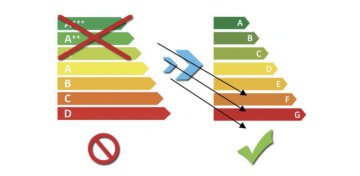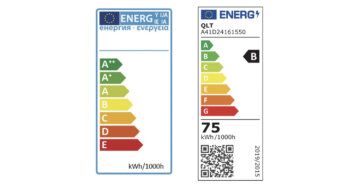by Raffaella Nebuloni – Qualitron
EPREL (EU Product Database for Energy Labelling) is the European database where manufacturers, importers and agents must register all energy-consuming products
EPREL is the database active since January 2019 for some categories of household appliances which, from 1 September 2021, has been enriched with a light-sources dedicated section. Two complementary regulations with the same basic approach. They dictate the technical requirements that lighting products must comply with for the registration in the aforementioned European database: regulation (EU) 2019/2015 on the energy labelling of light sources and (EU) 2019/2020 for the eco-design of light sources and power supply separate units. Products that do not meet the requirements foreseen by the two regulations cannot be registered.
The purpose of the EPREL database is to provide a clear indication of the energy efficiency and other key features of the products through the new labelling and to encourage light-sources manufacturers to invest more in the development of energy-efficient products to be registered in higher classes. National supervisory authorities also refer to the EPREL to carry out compliance checks on the market. For registering a product in this database, it is necessary to enter a whole series of technical data required by the regulations. These data allow the creation directly from the EPREL database of the energy label to be applied to the product, making it valid for placement on the European market. By scanning the QR code on the energy label or using the model registration number (EPREL ID) the consumer can reach the item database descriptive page from which it is also possible to download labels and the information sheets.
With this new regulation, a new scale going from the letter “A” (maximum efficiency) to the letter “G” (efficiency minimum) replaces the previous energy classification scale (A, A +, A ++ and A +++). Compared to the first, this second scale better highlights the efficiency differences of the products. After the new method of insertion in the new scale shown in the comparison below, products previously classified as “A +” are repositioned, as per the new scale, in the “E” class even if keeping the same energy consumption.


At present, there are no lighting products in the “A” class. This class is empty, waiting for the development of future more energy-efficient products.
For light sources, the EPREL registration is mandatory from 1 September 2021. This transition period, in which products on the market showing the old energy marking are still to be disposed of, is creating customers a bit of confusion: two lamps of equal performance, the first classified “A +” and the second already included in the new energy scale and classified “E”. They can be comparable on the market or share the same sales shelves. As often happens, the consumer may not yet be aware of the new energy labelling scale, therefore can misguidedly make his choice fall on the first lamp, penalizing the second just because “A +” looks better than “E”.
So, how to correctly identify the products from an energy point of view?
Let’s compare the two labels: on the left is the outdated label, although it can still be found on the market. On the right, the new label that in addition to the word Energy shows: the identifiers of the model and those placing it on the market, the new energy classification from “A” to “G”, consumption in kWh/1000h, the reference to the regulation (2019/2015) and the QRcode, scanning which automatically directs to the EPREL database.
A truly paradoxical situation that is now penalizing companies, above all the far-sighted ones such as Qualitron, which promptly took action to comply with the new energy provisions.